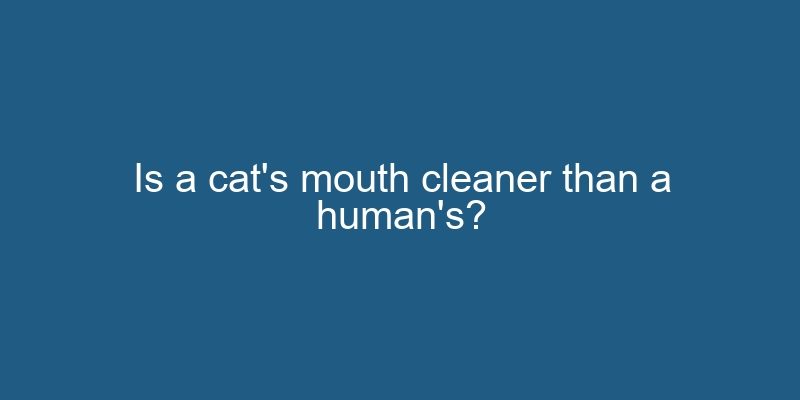When it comes to cleanliness, cats are often considered to be meticulous groomers. They spend a significant amount of time each day licking themselves, which leads to the belief that a cat’s mouth must be cleaner than a human’s. However, is this assumption based on factual evidence or just a common misconception? Let’s delve into the topic and explore the various aspects surrounding the cleanliness of a cat’s mouth compared to a human’s.
- The anatomy of a cat’s mouth
- The function of a cat’s rough tongue
- Understanding the concept of cleanliness
- The role of saliva in oral hygiene
- Saliva composition in cats
- Saliva composition in humans
- Cat dental hygiene
- Human dental hygiene
- Comparing the cleanliness of a cat’s mouth to a human’s
- 1. Diet
- 2. Oral hygiene practices
- 3. Bacterial load
- 4. Environmental factors
- Conclusion
The anatomy of a cat’s mouth
Before we can make any comparisons, it’s important to understand the unique features of a cat’s mouth. Cats have a total of 30 teeth, including incisors, canines, premolars, and molars. Their teeth are sharp and designed for tearing and shearing meat. Additionally, cats have a rough tongue covered in tiny, backward-facing papillae, also known as barbs or hook-like structures.
The function of a cat’s rough tongue
The rough texture of a cat’s tongue serves multiple purposes. Firstly, it aids in grooming by removing dirt, debris, and loose fur from their coats. The barbs on their tongue act like a natural comb, allowing them to keep their fur clean and free from tangles. Moreover, cats use their tongue to distribute saliva throughout their fur, which helps to cool them down during hot weather.
Understanding the concept of cleanliness
When discussing cleanliness, it’s crucial to clarify what we mean by “clean.” Cleanliness can be assessed in various ways, including the absence of dirt, bacteria, viruses, or other harmful microorganisms. It’s important to note that cleanliness can be subjective and context-dependent. For the purpose of this article, we will explore the cleanliness of a cat’s mouth and compare it to that of a human’s.
The role of saliva in oral hygiene
Saliva plays a vital role in maintaining oral health in both cats and humans. It helps to lubricate the mouth, aid in the digestion process, and protect against bacterial infections. However, the composition of saliva differs between species, and this can influence the cleanliness of their mouths.
Saliva composition in cats
Cat saliva contains certain enzymes that are effective at killing bacteria. Additionally, the rough texture of their tongue helps to remove debris and bacteria from their teeth and gums. However, it’s important to note that cat saliva also contains harmful bacteria, such as Pasteurella multocida, which can cause infections if introduced into a wound or a human’s bloodstream.
Saliva composition in humans
Human saliva contains a more diverse range of enzymes and proteins that contribute to oral health. These substances help to break down food particles and protect against bacterial overgrowth. Unlike cats, human saliva is generally considered to be cleaner and less likely to cause infections.
Cat dental hygiene
While cats have natural mechanisms to maintain oral hygiene, it’s still essential for their owners to take an active role in their dental care. Regular brushing, using feline-specific toothpaste and toothbrushes, can help prevent the buildup of plaque and tartar, reducing the risk of dental diseases such as gingivitis and periodontitis.
Human dental hygiene
Humans are well aware of the importance of dental hygiene. Brushing teeth at least twice a day, flossing, and regular dental check-ups are common practices to maintain oral health. These habits contribute to cleaner mouths and help prevent dental issues such as cavities and gum diseases.
Comparing the cleanliness of a cat’s mouth to a human’s
While cats have natural grooming mechanisms and enzymes in their saliva that can kill bacteria, it’s important to consider the overall cleanliness of their mouths compared to humans. Several factors should be taken into account:
1. Diet
Cats are obligate carnivores, which means their diet consists primarily of meat. This high-protein diet can lead to a buildup of bacteria in their mouths compared to humans, who consume a more varied diet.
2. Oral hygiene practices
Humans actively participate in oral hygiene practices such as brushing, flossing, and using mouthwash. These practices significantly contribute to maintaining oral cleanliness, whereas cats rely more on their natural grooming instincts.
3. Bacterial load
Although cats produce certain enzymes in their saliva that can kill bacteria, they also harbor harmful bacteria in their mouths. Humans have a lower bacterial load in their mouths, reducing the risk of infections and diseases.
4. Environmental factors
Cats explore their surroundings using their mouths, which can expose them to various pathogens and contaminants. Humans, on the other hand, have a lower risk of encountering such contaminants through oral contact.
Conclusion
In conclusion, while cats have natural grooming mechanisms and enzymes in their saliva that can aid in maintaining oral hygiene, the overall cleanliness of their mouths cannot be considered superior to that of humans. Humans actively engage in oral hygiene practices, follow a diverse diet, and have a lower bacterial load in their mouths. However, it’s crucial for cat owners to prioritize their pets’ dental care to ensure their overall health and well-being. Regular veterinary check-ups and proper dental hygiene practices can help keep a cat’s mouth as clean as possible.










